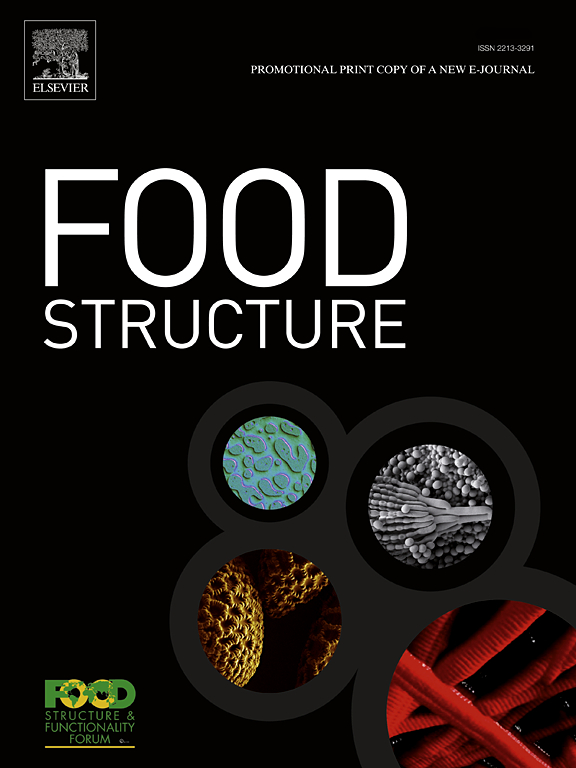Effect of soybean process by products (okara) incorporation on the quality and physicochemical properties of tofu
IF 5.9
3区 农林科学
Q1 FOOD SCIENCE & TECHNOLOGY
引用次数: 0
Abstract
Okara (the insoluble portion of soymilk remaining after tofu production) has the potential to strengthen the structure of tofu. In this study, the effects of different coagulants (GDL/CaCl2) and the okara volume ratio on tofu quality were investigated. The optimal okara additions required to increase the water holding capacity of tofu were 15 % (w/w soybean, upon acidification with glucono-δ-lactone, GDL) and 2.5 % (w/w soybean, upon electrostatic setting of proteins by CaCl2). Under this ratio, the β-fold content of tofu increased significantly and the random curling structure decreased (p < 0.05). Crystallinity increased from 11.89 % to 13.36 % for GDL-okara tofu and from 8.08 % to 14.33 % for CaCl2-okara tofu. Furthermore, SEM results displayed that GDL-okara tofu has a more homogeneous and dense gel network with filamentous and homogeneous pores, when compared to plain tofu. This study provided a comprehensive understanding of the gelling properties of soymilk at tofu preparation in the presence of okara under either GDL or CaCl2, confirming that okara has the potential to improve the structure of tofu.
大豆加工副产物(豆渣)掺入对豆腐品质和理化性质的影响
Okara(豆腐生产后留下的豆浆的不溶部分)有可能加强豆腐的结构。本研究考察了不同混凝剂(GDL/CaCl2)和豆渣体积比对豆腐品质的影响。提高豆腐保水能力的最佳添加量为15 %(用葡萄糖-δ-内酯(GDL)酸化时的w/w大豆)和2.5 %(用CaCl2静电凝固蛋白质时的w/w大豆)。在该比例下,豆腐β-fold含量显著增加,随机卷曲结构减少(p <; 0.05)。GDL-okara豆腐的结晶度从11.89 %提高到13.36 %,CaCl2-okara豆腐的结晶度从8.08 %提高到14.33 %。此外,SEM结果显示,与普通豆腐相比,GDL-okara豆腐具有更均匀和致密的凝胶网络,具有丝状和均匀的孔隙。本研究对豆浆在GDL或CaCl2条件下的凝胶特性进行了全面的了解,证实了豆浆具有改善豆腐结构的潜力。
本文章由计算机程序翻译,如有差异,请以英文原文为准。
求助全文
约1分钟内获得全文
求助全文
来源期刊

Food Structure-Netherlands
Chemical Engineering-Bioengineering
CiteScore
7.20
自引率
0.00%
发文量
48
期刊介绍:
Food Structure is the premier international forum devoted to the publication of high-quality original research on food structure. The focus of this journal is on food structure in the context of its relationship with molecular composition, processing and macroscopic properties (e.g., shelf stability, sensory properties, etc.). Manuscripts that only report qualitative findings and micrographs and that lack sound hypothesis-driven, quantitative structure-function research are not accepted. Significance of the research findings for the food science community and/or industry must also be highlighted.
 求助内容:
求助内容: 应助结果提醒方式:
应助结果提醒方式:


